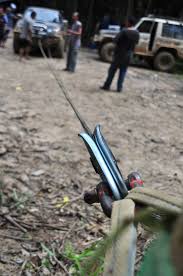FOUR WHEEL DRIVE
DRIVING COURSE of MALAYSIA
ENDAU ROMPIN SELAI, JANDA BAIK, KUALA LUMPUR, SEMENYIH, ULU SLIM,
GOPENG PERAK, BUKIT TINGGI, KUCHING SARAWAK, KOTA KINANABU SABAH, TAWAU.
FOUR-WHEEL DRIVING COURSES - Endau Rompin
Course Fees
|
4WD Basic and
Advance Package Rates at Endau Rompin Selai per person
|
PACKAGES
|
Particulars
|
2-3 pax
|
44-5 pax
|
6-7 pax
|
8-9 pax
|
Above 10 pax
|
2D/1N -
4WD Basic Drivers Training
|
Merekek Camp Site
|
RM 1200.00
|
RM 1000.00
|
RM 800.00
|
RM 700.00
|
RM 600.00
|
2D/1N -
4WD Basic Drivers Training
|
Luxury Chalet Lubok Tapah
|
RM 1300.00
|
RM 1100.00
|
RM 900.00
|
RM 800.00
|
RM 700.00
|
|
|
|
|
|
|
PACKAGE ITINERARY -
BASIC 4WD DRIVERS TRAINING (ENDAU ROMPIN)
|
Package
includes :
Return
4WD transfers to Lubok Tapah / Lubok Merekek
One or more units fully equipped off road ready 4WD vehicles
1
night accommodation Simple Chalet or Dormitory
Drinking water at site
Meals as stated in the itinerary.
Certificates of participation
All equipments required for training.
Complimentary photo CD during training
Personal
accident insurance RM 1000.00 and RM 500 on medical fees
Proposed itinerary
Day 01
1200h Arrive at Bekok
Lunch enroute at own expense
Registration at National Park office
Transfer
to Lubok Tapah / Lubok Merekek
1400h Introduction and briefing
Theory - principles of 4WD
Knowing your vehicles
- Gear
- Position
- Engaging
- Testing
- Disengaging
- Tyres
- Introduction to the different locking mechanism
- Locking
- Unlocking
- Types of tyres
- Tyre pressure
Environment protection
Basic recovery - equipment.
Basic recovery - snatch straps.
Basic recovery - high lift jack.
List of items to bring when traveling to off road
1900h Dinner
Day
02
0800h Breakfast
0900h At outdoor site knowing your vehicles - testing on
changing spare tyre
- Driving
- Vehicles inspection
- Maximum
inclination
- Required equipments for off roading
- Winching
1300h Lunch
1400h Drive to outdoor site
-
Driving Techniques
-
Practical - hill starts and stops.
-
Hill ascent and descent.
-
Steep slopes
-
Uneven surface
- Changing tyre in difficult area
- Practical use of pulleys and straps
- Practical
driving experience into the wild
- Certificates presentation
1700h Transfer to Bekok.
|
|
|
Other Areas that 4WD Course Training available are Janda Baik, Gopeng, Sedim and Taman Negara.
You are encourage to either email or What's App for course fees.
|
- We offer Basic and
Advanced Four-wheel Driving Courses to ensure that your first
adventure into the jungle is one where you have confidence in your
vehicle as well as your own capabilities.
- Our Advanced Driving
Course also incorporates Rescue & Recovery Techniques to ensure
minimal damage to your vehicle.
|
We offer two drivers training courses.
|
|
Basic 4WD Drivers Training - Package
Itinerary as stated above
Introducing you to the basics world of 4WD Antiques and
basic recovery:
Theory - Principles of 4WD
Driving Position
Environment Protection
Practical - Hill starts and stops.
Hill ascents descent.
Picking driving lines.
Driving technique.
Convoy etiquette.
Crossing Rocky terrain.
Mud and Water crossing techniques.
Basic recovery - equipment.
Basic recovery - snatch straps.
Basic recovery - high lift jack.
Basic recovery - winching.
|
|
4x4 BASIC OFF-ROADING
SKILLS
* To know the 4x4
vehicle
* To train and drive on
handling 4x4 vehicle and recovery technique in a safe and proper way
* To give guidelines in
preparation, driving skill and 4x4 vehicle performance
* Responsibility to the
vehicle, people and employee
* To add team-work value
Training Syllabus
- 4x4 general knowledge
test
- To know your 4x4
vehicle
- Vehicle and support
equipment preparation
- Personal preparation
- Route preparation
- On-road driving
- Off-road driving
- Recovery techniques
- After off-road
- 4x4 general knowledge
tests
|
|
Advanced Driver Training - Please email us to
enquire
Advanced driver training - Further
Introducing you to the more advanced
 techniques of 4WDing: techniques of 4WDing:
* Practical - Advanced Hill starts and stops
* Practical - Advanced Hill starts and stops.
* Hill ascents descent.
* Bridge Building
* Advanced Recovery.
* Using another vehicle in Recovery.
* Advanced winch recovery.
* Off track vehicle recovery.
|
|
Things to Always
Carry on off road 4WD Trips
* Basic
recovery gear (snatch straps, 'D' shackles, shovel, axe, high lift
jack and jacking plate; winch, slings and chain saw ).
* First-aid kit
(insect repellent, antiseptic, burn cream, scissors, eye drops,
bandages, dressing).
* Fire
extinguisher.
* Tools (ring
and open spanners, hacksaw, file, wire cutter, tyre gauge, pump
and repair kit, battery jumper
leads, spray lubricant).
* Spare parts (radiator
hoses, fan belt, fuses, spark plugs, coil, condenser, tyre tube).
* Extra water,
map of area, compass, torch, knife, matches
* Flint for
starting fire
|
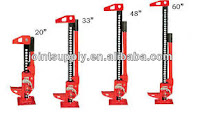 |
| 4x4 Off Road Jack |
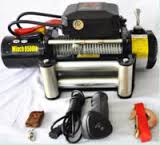 |
| 4x4 Off Road Winch System |
 |
| Add caption |
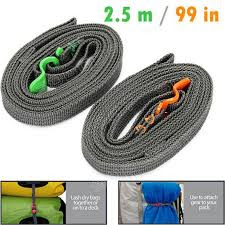 |
| 4x4 OffRoad Ropes |
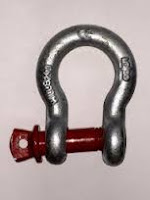 |
| 4x4 OffRoad Lock |
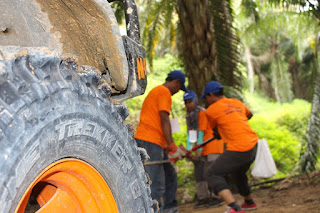 |
| Winching Skill |
 |
| 4x4 OffRoad Rope Winch |
|
OFF ROAD DRIVING TIPS
|
When
talking about Off road driving especially in Malaysia's rain forest, we
won't escape to riding through a deep mud or sand. Here are some tips
that may useful for us:
- Observe all
rules and regulations pertaining to the use of public land.
- Avoid areas
which are easily damaged such as swamps and vegetated sand dunes.
- Carry out all
the rubbish you brought in.
- Always ask
permission before entering private land.
- Leave gates
as you find them.
- Before riding
through deep mud or sand, deflate your tires slightly to increase
the tire’s footprint and provide better traction. Deflated tires
will decrease your ground clearance though. Remember to re-inflate
your tires before going on-road again.
- Use a steady momentum to carry you
through. Keep your speed up and use higher gears. Don't spin your
tires, and don't stop till you're out of the deep mud or sand. If
your wheels start to spin, ease off the throttle just a bit and
allow the tires to slow down and regain traction.
- If you lose traction and the vehicle is
barely moving, turn the steering wheel quickly from side to side in
short strokes (only 1/8th turn) to allow the front tire walls to
find extra grip.
- If muddy conditions force you to drive
in the ruts, know where your front wheels are pointed at all times.
Your vehicle will follow the ruts, even with the wheels turned to
the right or left.
- If you
encounter a dry spot with the wheels turned, then the front wheels
can regain traction and suddenly throw the vehicle out of the ruts,
resulting in a loss of control and possible damage.
|
MODIFICATION FOR OFF ROAD
4WD
|
There are a few modification to be done on
your 4WD before go off-roading (for mild Off-road). While many off-road
vehicles can green land or "two track" most unpaved roads, the
desire of many off-roading enthusiasts is to attempt much more
challenging terrain. The following listings show the modifications that
are done and why:
Vehicle Lifts
A vehicle lift is when the normal height of a
vehicle is lifted to increase the amount of clearance between the ground
and the bottom of the body or frame of the vehicle. There are numerous
types of vehicle lifts:
Body Lift: A simple and cheap way to lift a vehicle that has
a body on frame design such as a pickup truck or some SUVs. A body lift
consists of larger spacers that replace the normal mounting points of the
vehicle's body on its frame. These typically are between 1 - 4 inches.
Any more than four inches (102 mm) will create a less sturdy set up. Body
lifts are not possible on vehicles with a "Uni-body"
construction. Uni-body vehicles have the frame formed into the body, such
as on a Jeep Cherokee.
Suspension lift: A suspension lift is when modifications are
done to the
vehicle's springs, shocks, controlling arms and steering
linkage. In this
case small or short pieces of the suspension are
replaced with longer or
larger items of similar construction. Lifting a
vehicle changes its driving
dynamics and a suspension lift adds to the
vehicle's handling capabilities
in relation to the increased height.
|
FUEL EFFICIENCY TIPS
|
Increases in the price of gas, accompany the
increase in the number of fuel-saving scams.
Continuous increase in the price of gas is common news nowadays. This is
accompanied by an upsurge in advertising exposures for “gas saving”
gadgets. These products attract potential buyers searching for methods to
maximize fuel efficiency.
There are important procedures car owners can take in consideration to
improve gas mileage. According to the Better Business Bureau, the public
should be critical in assessing products that claim gas saving features
for vehicle devices or additives for gas and oil.
There are products that feature gas-saving features that really work. In
addition to that, consumers could be facing a major engine trouble or a
nullified creator’s warranty by putting devices to the Engine. Consumers
should be wary of these specific advertising slogans: “20 percent fuel
efficiency improvement”
A hundred or more devices that feature gas-saving qualities are proven
untrue by the Environmental Protection Agency. Worse, there are so-called
“gas-saving” devices that may cause a harmful effect to a vehicle’s
engine.
Another side effect is more smoke emissions.
Examples of these devices are Engine Modifiers, Additives, Fuel Line
Gadgets, Liquid Injection, Vapor and Air Release Devices and a lot more.
Consumer testimonials are common in fuel saving ads. Assuming these
testimonials are not made up, few consumers test the fuel consumption of
their vehicle before putting on the gadget. Therefore, an objective
comparison of the fuel consumption before and after the product was added
will not be attained.
The following are practical tips to conserve gas:
Efficient driving
Just drive reasonably within the speed limit. Remember that speeds of
more than 60 miles per hour increase fuel consumption.
Do not do sudden starts, accelerations and stops.
Acceleration should be done gradually. The gas pedal should not be
stepped on more than one fourth of the way down. This will allow the
engine to function most efficiently. Gas conservation could reach up to 5
percent if sudden stops, jerks and accelerations are avoided.
Make use of gears for overdrive and cruise control as needed. Fuel
efficiency is attained when moving on the highway.
Windows should be closed on highways. Windows that are open can create
air drag that can decrease the fuel consumption by 10%.
Take out unnecessary baggage. The trunk should be kept clean, any gadget,
tools or loads that are not needed should be taken out. 100 pounds of
extra baggage can affect fuel economy by two percent.
The car should always be maintained. The engine should be given a regular
tune up, the tires should always have the right air pressure and
efficiently aligned, the oil should be changed when needed and air
filters replaced regularly. Clogged filters can affect gas consumption
adversely by up to ten percent.
Turn off the engine whenever there is an
opportunity. Idle engine wastes fuel. There are instances where the
engine could be turned off; stopping for gas, waiting for someone,
changing tire pressure, caught in traffic and a lot more.
Engine warm-up fuel conservation tips:
Lengthy warming up of the engine should be avoided. 30 to 45 seconds
should be enough time. Check if the automatic check is removed after
warming up the engine. This is usually stuck which could usually cause
poor gas and air combination.
Do not rev the engine. This is usually done before turning off the
engine. This causes unnecessary fuel loss and also washes the oil within
the cylinder walls. As an effect, there is air pressure loss and
consequently fuel loss as well.
|
|
WINCH CHALLENGE
|
This
is the most recent, and usually the most difficult, form of course
trialling. Again, a course is laid out with a series of gates and
vehicles must complete as many gates in a course as possible. However,
these events take place on very difficult terrain- difficult to the
extent that vehicles are not expected to be able to complete the course
without the use of a recovery winch.
Winching
is a definite skill in itself, aside from off-road driving, and brings
elements of team-playing into the trial, as a successful (and safe)
vehicle recovery needs at least 2 people to complete. Some trials are for
teams of 2 or 3 vehicles, each helping to recover the others through
obstacles. A Winch Challenge may extend to other off-road driving skills,
such as building a log bridge to cross a river.
SAFE WINCHING
TECHNIQUES
Every
winching situation has a potential for personal injury. In order to
minimize that risk, it is important that the user are being guided,
familiarise, think safety before using the winch.
The basic training is a guide which provides understanding proper
winching technique. It is because every winching situation is different,
constant judgment and consistent focus on safety is of great importance.
* Training Syllabus
* Winch design and mechanism
* How the winch works
* How to choose a winch
* Winch Installation
* Winch accessories
* Winching hand signals
* DO's and don'ts
* Before pulling
* During pulling
* Rigging methods
* Maintenance
|
|
WHAT IS 4WD SYSTEM
|
The main component that differentiate the 2WD
(normal vehicles) and 4WD is on their transmission system or an
automotive drive system in which mechanical power is transmitted from the
drive shaft to all four wheels.
Normal vehicles only powered by main gear transmission box as compared
with 4WD vehicle is also attached additional gear box or transfer case /
gear which usually located behind the gear transmission box.
Transfer case main function is as a housing for drive shaft / propeller
shaft to move the wheel forward and backward. Transfer case box possess 2
additional set ratio gear that are high (4 High / 4H) and low (4 Low /
4L).
When you choose a low gear ratio that mean you are doubling the torque to
the wheel. Low torque circle with the mechanical transmission system
enable all four wheel advantage to climb or to carry heavy load. Please
remember that with 4 Low gear ratio does not give you wheel grasp but
only to supply more torque for your wheel.
There are two type of 4 wheel system that is full time 4WD and part time
4WD.
Mitsubishi Pajero is classified as a part time 4WD and this type of 4WD
become more popular in Malaysia.
When to use 4H:

* for traction when the area isn't steep
* when stuck in sand
* extremely slippery conditions
* snow
* ice
* rocky, gravel roads
* gullies
* extremely muddy areas
* ridges
Low Range 4WD
4L is for creeping along at slow speeds. It reduces the strain on your
vehicle, just remember to stay below 25mph in low range. While it does
not provide more traction, it does provide 2-3 times more torque at about
1/2 or 1/3 of the speeds in high range. Low range gear ratios are
approximately half that of high range.
When to use 4L:
* on wet, slippery surfaces
* passing through sandy areas
* on rough trails
* through shallow water
* rock-climbing
* climbing steep hills
* through mud
* descending steep hills
Additional Tips:
- Don't change gears in the middle of a water crossing, going
up or down hills, or in sand dunes.
- Be prepared: Engage low-range 4WD before you need it.
- Don't operate 4WD on hard dry surfaces.
- When in doubt, use a lower gear!
|
|
|


















